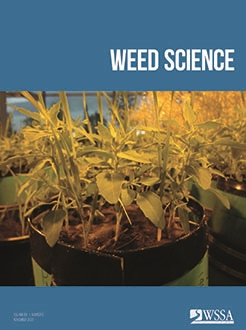Wild radish (Raphanus raphanistrum L.) is a weed found globally in agricultural systems. The facultative winter annual nature of this plant and high genetic variability makes modeling its growth and phenology difficult. In the present study, R. raphanistrum natural seedbanks exhibited a biphasic pattern of emergence, with emergence peaks occurring in both fall and spring. Traditional sigmoidal models were inadequate to fit this pattern, regardless of the predictive environmental variable, and a corresponding biphasic model (sigmoidal + Weibull) was used to describe emergence based on the best parameters. Each best-fit chronological, thermal, and hydrothermal model accounted for at least 85% of the variation of the validation data. Observations on phenology progression from four cohorts were used to create a common model that described all cohorts adequately. Different phenological stages were described using chronological, thermal, hydrothermal, daylength-dependent thermal time, and daylength-dependent hydrothermal time. Integrating daylength and temperature into the models was important for predicting reproductive stages of R. raphanistrum.
How to translate text using browser tools
26 August 2020
Incorporating Environmental Factors to Describe Wild Radish (Raphanus raphanistrum) Seedling Emergence and Plant Phenology
Theresa Reinhardt Piskackova,
S. Chris Reberg-Horton,
Robert J. Richardson,
Katie M. Jennings,
Ramon G. Leon
ACCESS THE FULL ARTICLE

Weed Science
Vol. 68 • No. 6
November 2020
Vol. 68 • No. 6
November 2020
Hydrothermal time
integrated weed management
predictive models
thermal time
weed growth





